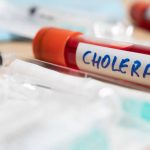Nutritionist Sadoc Nyaisa warns that the presence of toxic metals in fish could have “devastating consequences for pregnant women, nursing mothers, and their children.”
Nakuru County has declared fish from Lake Nakuru unfit for human consumption following research that found toxic heavy metal contamination exceeding international safety standards.
The ban, issued in September 2025, makes trading fish from the lake illegal and threatens prosecution and license revocation for violators. Enforcement will involve multiple agencies, including the County Public Health Department, Kenya Fisheries Service, County Fisheries Directorate, Kenya Wildlife Service, and Kenya Coast Guard Service.
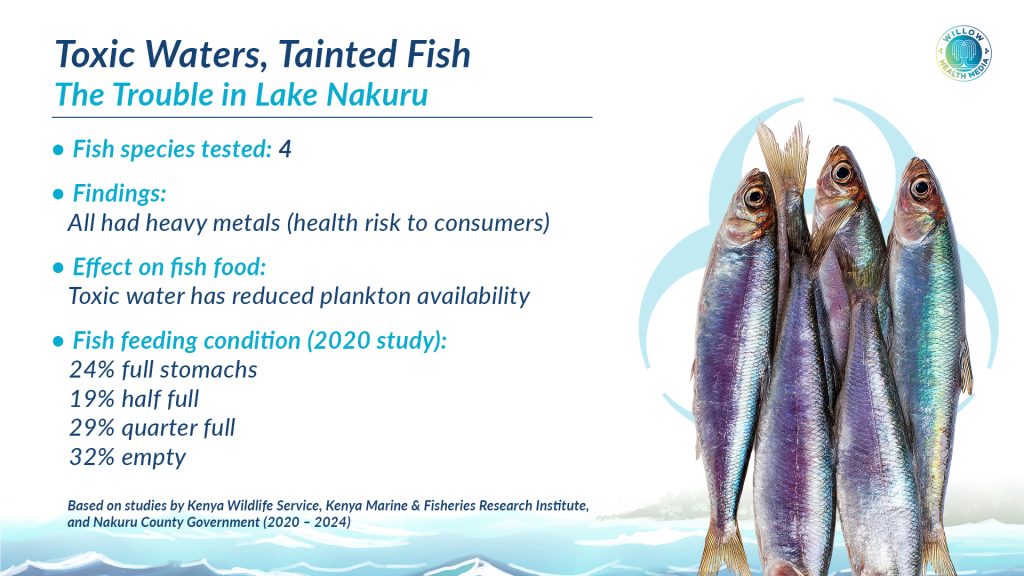
Research conducted by experts from KWS, Nakuru County government and the Kenya Marine Fisheries Institute (KMFI) found that at least four out of eight fish sampled contained chromium and nickel metals exceeding Food and Agriculture Organisation (FAO) standards. Lead was detected in all sampled fish, though at recommended levels.
“Toxic heavy metals were detected in all the fish samples. The levels of chromium exceed the FAO limit of 0.14mg/l. The other toxic metals are of concern. The detection of heavy metals in the fish, even in small concentrations, may not have an immediate health threat to consumers of fish, but will likely have adverse effects with prolonged consumption since heavy metals bio-accumulate,” the experts recommended.
The investigation was launched in April 2020 after mass fish deaths were reported in January and between late February and mid-March. Locals around River Njoro and Barut/Mwariki bridge had carted away thousands of mature Nile Tilapia during these incidents.
Low levels of oxygen in Lake Nakuru attributed to contamination by raw sewage
Analysis revealed dissolved oxygen levels as low as three milligrams per litre in littoral zones and 2.6 milligrams per litre in mid-lake areas, well below the five to six milligrams per litre minimum fish require. The DO levels declined from 6mg/l on the surface to 1.3mg/l one metre down.
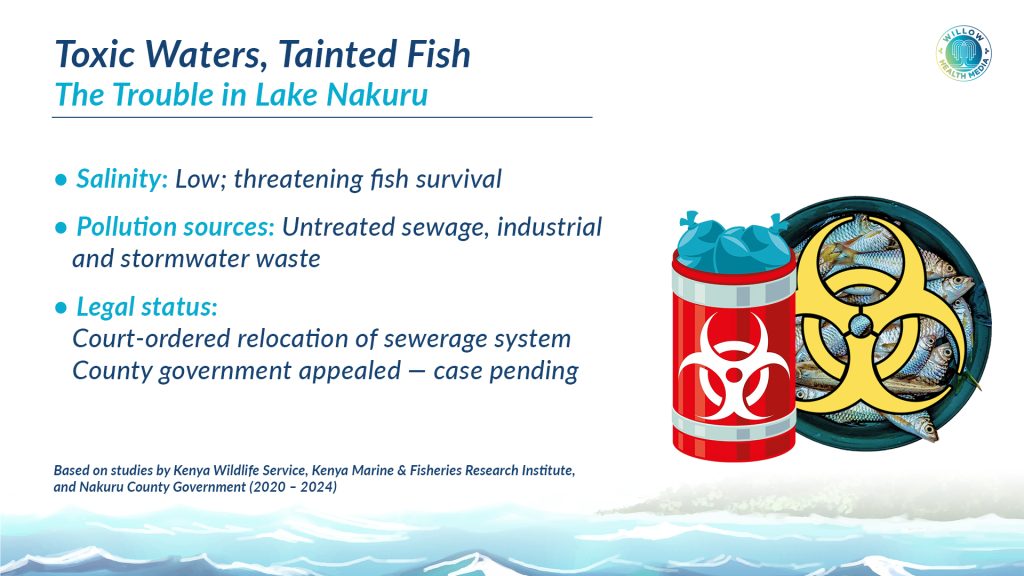
“The extremely low (anoxic) levels of oxygen in Lake Nakuru are attributed to a combination of organic waste contamination of the lake by urban discharges such as raw sewage and storm water, as well as natural biological decomposition,” according to findings by Kiogora Murithi, Jackson Raini, Joseph Edebe and Ednah Waithaka.
The study also found high nitrate levels toxic to Oreochromis niloticus at concentrations exceeding 45 milligrams per litre. Only 24 per cent of sampled fish had full stomachs, whilst 32 per cent were empty, indicating food inadequacy due to toxic water conditions.
Heavy metals, including arsenic, cadmium, chromium, lead, nickel, mercury, selenium, cobalt, copper, and zinc, were found in Lake Nakuru water, with only molybdenum exceeding recommended standards.
“The waterborne metals uptake by fish can be considered legible in these environments, especially in saline-alkaline water where heavy metals accumulate in sediments. Chromium (Cr), Copper (Cu), Lead (Pb), and Zinc have accumulated in the sediments as a result of unregulated discharges and because this alkaline lake has no outlet,” the study stated.
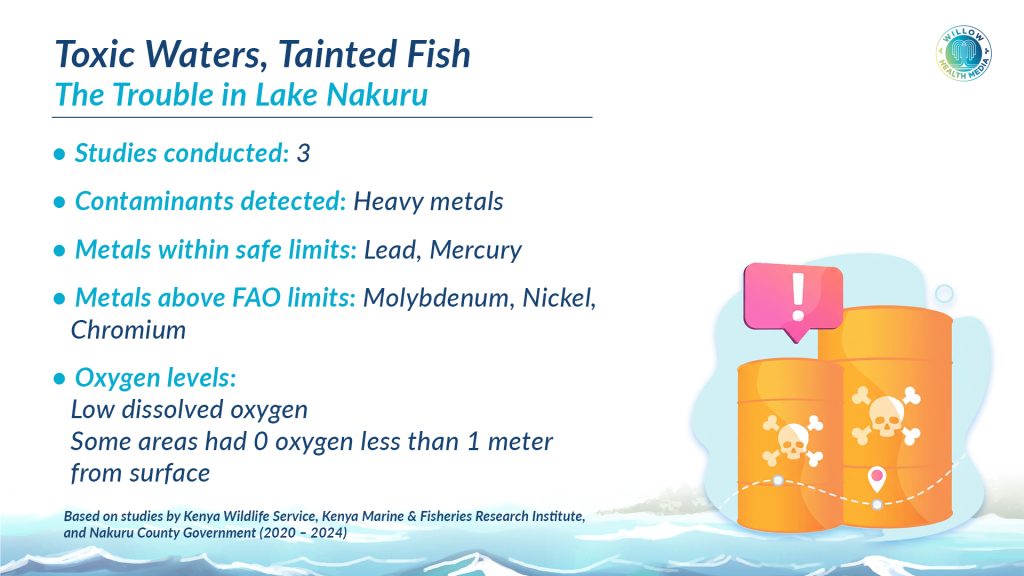
How would a hotelier in Narok differentiate tilapia from Lake Nakuru from Lake Victoria?
Environment conservationist Samuel Gichohi revealed his firm had successfully sued Nakuru County Government over lake pollution before the administration appealed. The High Court ordered the county to stop emitting waste to the lake and relocate sewage from the Lake Nakuru basin.
“The past administration in 2022 publicly declared it had secured money to rehabilitate the sewerage system, but on the ground, things remain the same,” Gichohi said.
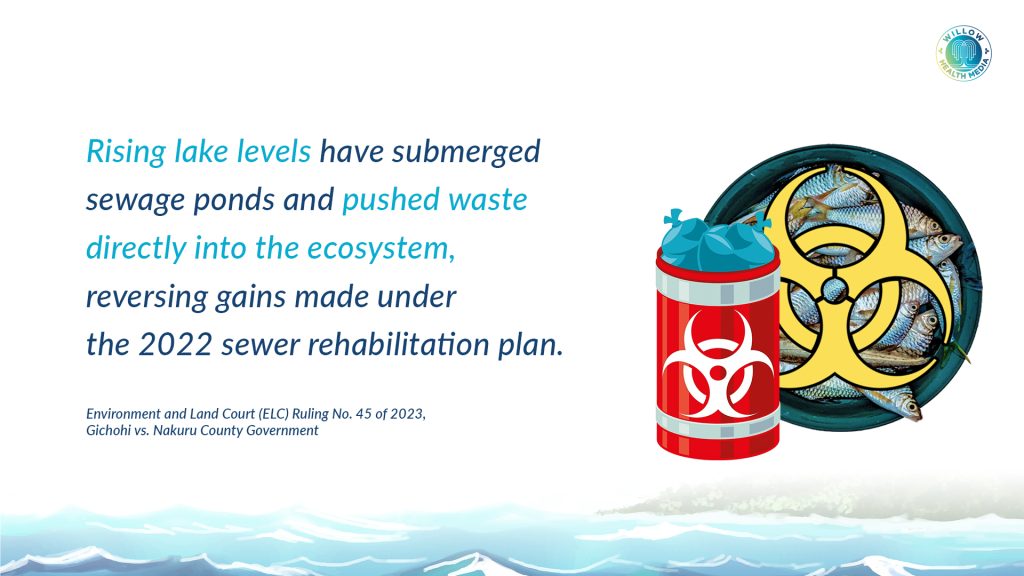
According to Gichohi, sewage dumping in Lake Nakuru has been happening for at least a decade, with rising water levels submerging sewage ponds.
“There needs to be goodwill from the administration and stakeholders to attain safe fishing in Lake Nakuru, which is a protected rhino sanctuary. Fishing activities are not only a danger to human lives based on recent research findings, but are also encouraging poaching of wildlife and aggravating human-wildlife conflict,” Gichohi said.
Climate Risk expert Joel Njogu questioned the practicality of the ban, asking: “How would a hotelier in Narok or any other region in Kenya differentiate a tilapia from Lake Nakuru from that from Lake Victoria? Would measures to prevent fishing in Lake Nakuru be more effective?”
People eating fish from Lake Naivasha are consuming harmful pesticides
Public health enthusiast Martha Chege commended the researchers and called for urgent interventions. “There’s definitely much that needs to be done to strengthen regulations, public awareness and accountability across industries. It is encouraging to see research and reports like this driving the conversation,” she said.
Nutritionist Sadoc Nyaisa called for further research into the impact on maternal health. “I can’t imagine the devastating effects that toxic heavy metals in fish have on pregnant and lactating women and children,” Nyaisa observed.
A 2011 study on nearby Lake Naivasha by zoologist Japhet Mworia Anampiu found 93 per cent of 82 fish sampled had detectable levels of organochlorine pesticide residues.
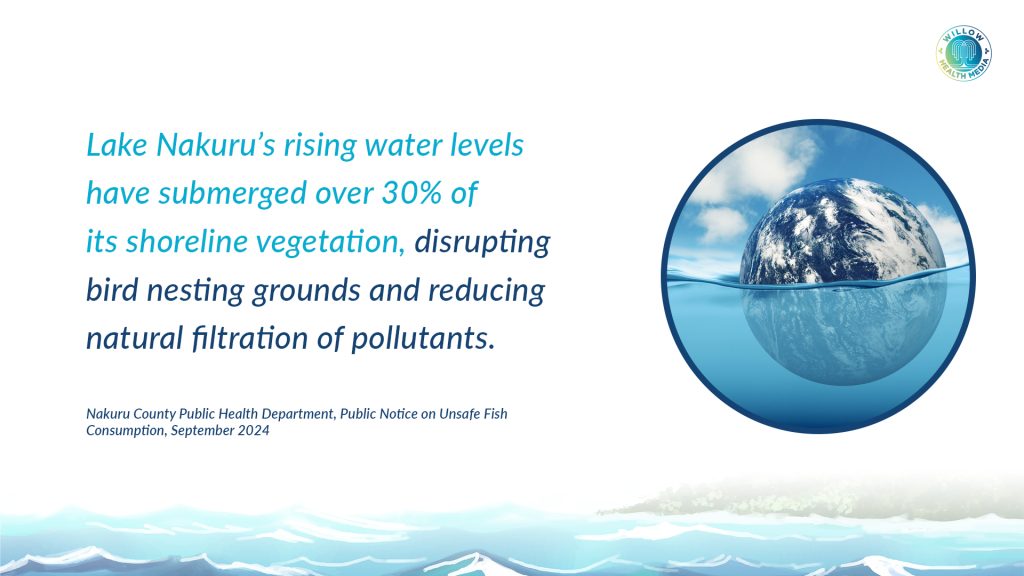
“Lake Naivasha is contaminated with low levels of organochlorine residues, which were found to be similarly distributed in the three fish organs, liver, muscle and eggs. Fish from Lake Naivasha contribute to the dietary intake of organochlorine pesticides by human beings since the residues were evidently found in their muscle, which are normally consumed,” the study concluded.





